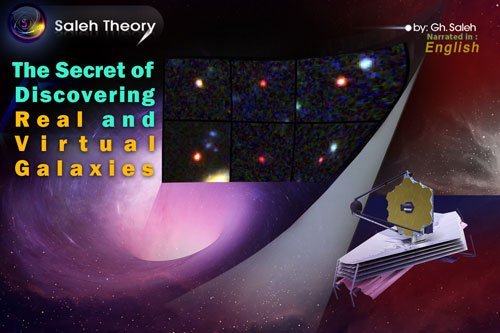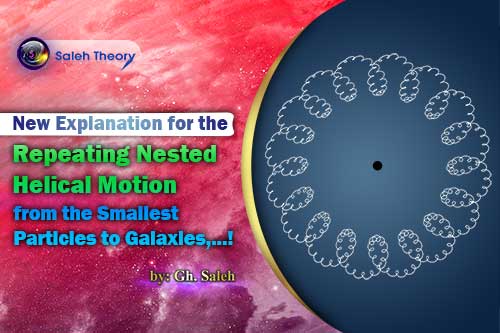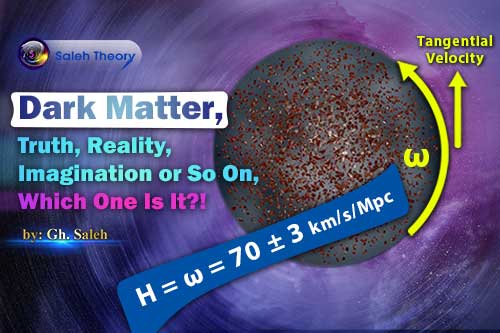
Dark Matter, Truth, Reality, Imagination or So On, Which One Is It?!
To clarify, we need to gradually and continuously look for real and logical documents, mathematical and physical proofs, etc.
Scientists have concluded that dark matter constitutes more than 85% of the observed mass, presents everywhere, and affects everything but is neither audible and visible nor sensible. However, scientists have not yet been able to trap the dark matter.
If we take a simple look at the nature of dark matter, it has the same properties as natural forces. Actually, if we consider the definition of mass in classical physics, dark matter is not similar to this definition; and is closer to the definition of natural forces, invisible but effective.
To search for the truth and draw conclusions from the complex natural phenomena and various issues, we must find the beginning of this universe and start our search from it.
First, we take a look at the Big Bang phenomenon, which could be the beginning of the universe. If we want to explain the Big Bang phenomenon, we must say that a very large mass in a very small volume starts an explosion that is the source of all existing objects, energies, and forces.
Given its clear and natural effects, it can be said that at the zero moment of the Big Bang, a huge explosion has occurred, and objects, energies, and forces spread in all directions, created a nebulous sphere with a radius of 1026 meters.
If we look at this hyper-huge sphere, we can find all particles, from sub-photons, photons, electrons, protons, and neutrons up to various elements, and even nano-black holes. Because with a density of 1042kg/m3 and an extremely intense explosive effect, the Big Bang has the ability to create all possible particles of the universe.
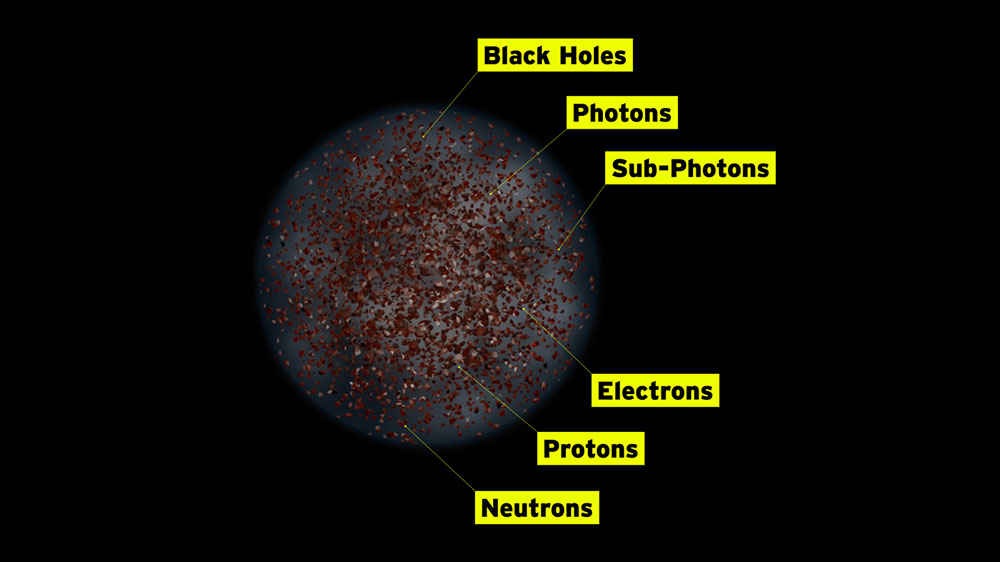
In reality, it can be said that the Big Bang is the strongest and most intense explosion. Now imagine that we are looking at the universe after the Big Bang from the outside, then we will see something so large (Uni-Mom) that could create current structures. Inside this sphere there were all the particles and elements and a big dust has been created in the universe.
This special state is a few seconds (less than 10 seconds) after the big explosion. During this time, all particles were expanding uniformly in the universe with very high velocities due to the explosion. Then, their linear velocity has decreased and reached an average linear velocity, which is less than the initial velocity. As a matter of fact, from this moment the linear velocity decreases relative to its previous time.
On the other hand, according to Hubble's law, the universe is rotating. This law explains that objects and particles have an angular velocity in their rotational motion (H or ω), and the farther they are, the higher their rotational velocity is. In other words, all particles in the Uni-Mom, or the same hyper huge nebulous sphere, have had a rotational motion with a constant angular velocity, ω or H (H=ω= 70±3 km/s/Mpc) but their tangential velocity has been varied based on their distance.
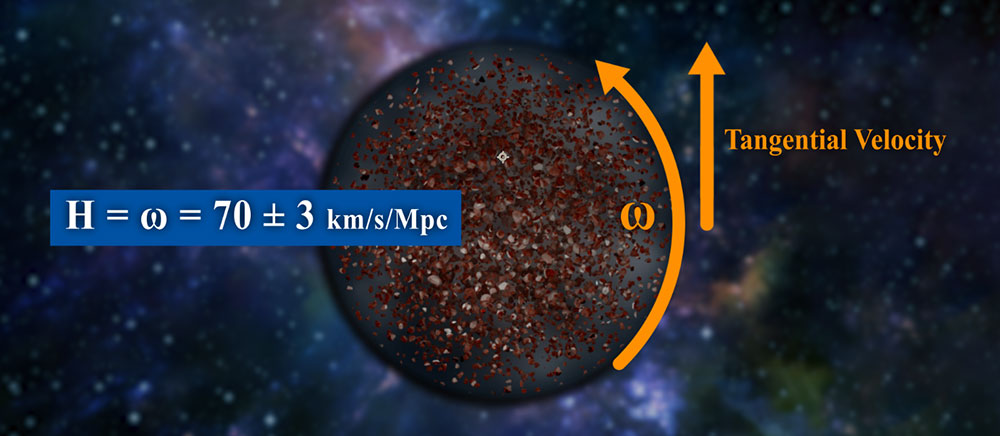
Notice:
Although this hyper-huge nebulous sphere has shaped the universe after about 10 seconds and each particle simultaneously has a decreasing linear velocity and an increasing tangential rotational velocity, the objects do not receive any force from the center of the Big Bang or the sphere of the universe, because the explosion happened, and all particles have expanded and no force will receive from any point.
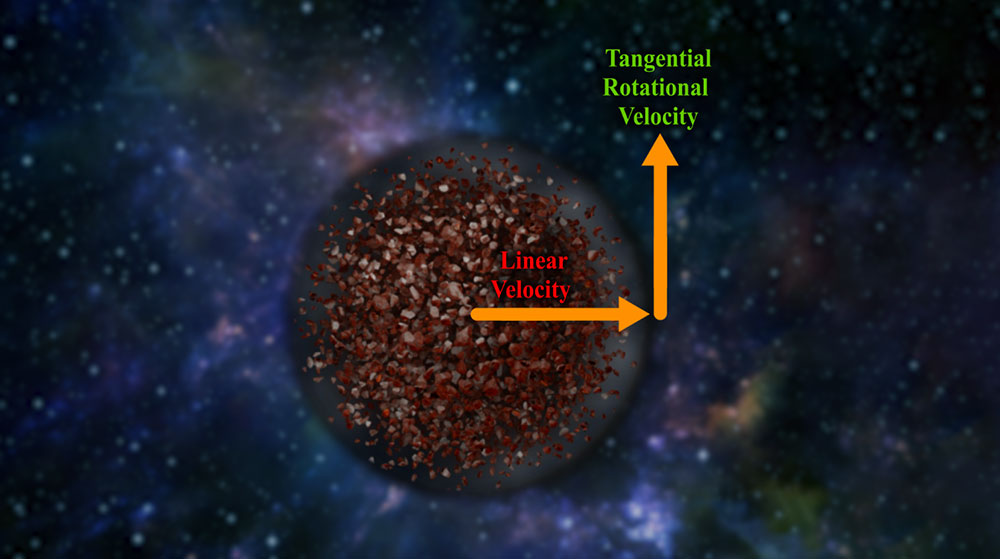
Indeed, this hyper-huge sphere has expanded in infinite space, and each particle has been placed in its place, and this sphere for years, can have internal linear motion (which causes its expansion) and rotational motion (which increases the velocity of particles). It can be said that all particles on a same radius have uniform linear velocities concerning each other, their ∆L is zero, and their angular velocity ∆ω is also zero with respect to each other.
It can be said that each particle in our universe is in its own special orbit, and no force from any other point will affect it. The only effective factor on these particles is the remaining energy of the Big Bang explosion. Certainly, the remaining energy of the Big Bang (which is the same dark energy) is the factor that continues the movement of each particle in its linear path.
As time passes, the particles of the universe approach each other and join together, forming celestial objects such as planets, stars, black holes, moons, and comets. It should be noted that when particles join together to form larger objects, they continue their linear and rotational velocities before joining.
Clearly, it can be said that the uniform space of our universe has gradually transformed into condensed parts of objects over time. Like the Solar System, which has a star in the center and planets that rotate at large distances around it. With the growth of black holes and the gathering of stars around black holes, little by little this universe has become the present universe.
In simpler terms, with the passage of time, the universe transforms from a uniform large entity (the Uni-Mom) into the universe that we observe today, containing visible stars, galaxies, and clusters.
An important point to note is that the velocity of any particle or celestial object is intrinsic to that particle or mass in its actual and real orbit, and does not require any force from the central black hole to keep them in their galaxy's motion path.
So, with the least possible force, all solars orbit around black holes, and all galaxies around their clusters, etc. in their own orbits.
Result:
Dark matter neither exists nor has an effect; rather, the model of the spatial motion of particles and objects is the same as dark matter. Indeed, any particle in its specific orbit (with decreasing linear velocity and increasing tangential velocity) is in motion and constructs the structure of the universe.



